The 1950s ushered in an entirely new music scene in the United States - the war was over, production was growing, and prosperity followed suit. The big bands of the 1940s gave way to smaller three or four piece outfits whose amplifier technology allowed them to fill dance halls that new sound - rock and roll.
I'm always a Gibson guitar buyer but I especially love the Gibson ES-330. Please contact me here to sell a vintage Gibson guitar.
Gibson took notice of Fender's growing success with the 1950 Broadcaster then Telecaster guitar debuted their own solid body in 1952. But Gibson was the king of arch top guitars after winning the battle and eventually buying their then rival, the Epiphone company, in October of 1957. Gibson built on this success by introducing thinline archtop guitars - described as "wonder-thin" in the catalogs - whose body depth was only about 1 3/4" on the outside edge and were more comfortable to play standing up and were less likely to feed back at high stage volumes. 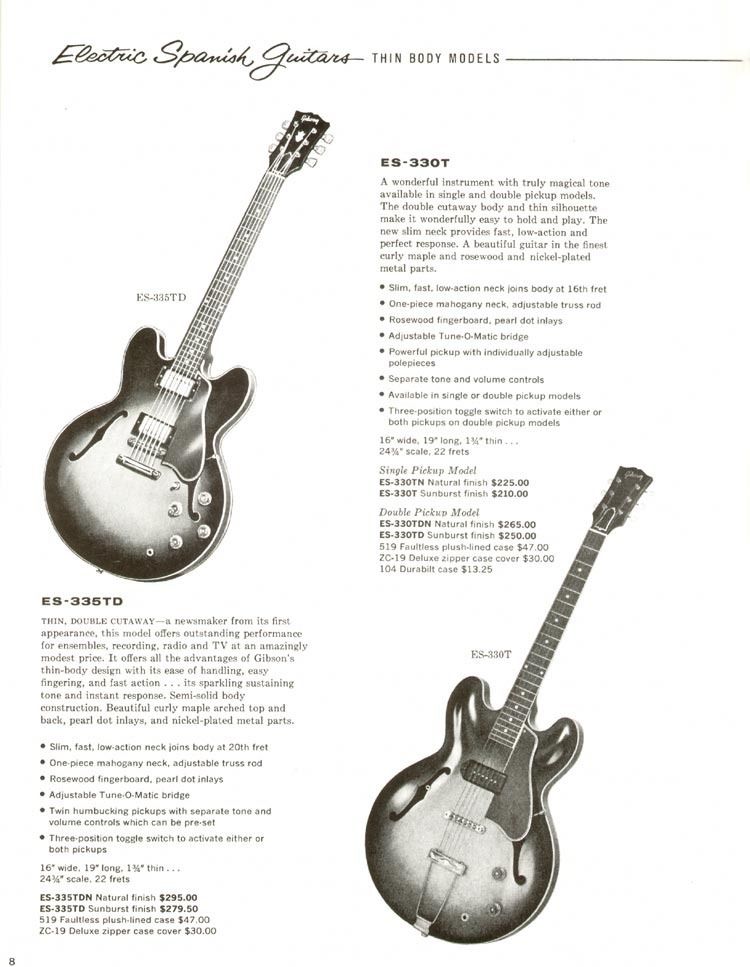 The initial E-125t and ES-225t enjoyed varying success until Gibson introduced the ES-330 in 1959. The 330 utilized the attractive body style of the year prior's ES-335 model but that's where the similarities end. The 330 model employed a fully hollow body, P-90 pickups, and a neck joint at the 16th fret instead of the 19th. The double pickup (denoted by the "d" in ES-330td) was offered at $250 in the 1960 catalog compared to the ES-335td's $279.50 (about $2054.27 and $2,296.68 adjusted for inflation in 2017 dollars).
The initial E-125t and ES-225t enjoyed varying success until Gibson introduced the ES-330 in 1959. The 330 utilized the attractive body style of the year prior's ES-335 model but that's where the similarities end. The 330 model employed a fully hollow body, P-90 pickups, and a neck joint at the 16th fret instead of the 19th. The double pickup (denoted by the "d" in ES-330td) was offered at $250 in the 1960 catalog compared to the ES-335td's $279.50 (about $2054.27 and $2,296.68 adjusted for inflation in 2017 dollars).  Few changes were made to the model for its initial decade long run. Of note, a Natural finish was offered only for 1959 and 1960 and was replaced by a Cherry option in 1961. The dot inlays gave way to block pearloid inlays in 1962. The body shape remained largely the same except that the wings on either side of the neck changed from a rounded top, "Mickey Mouse" ear shape to a slightly more pointed shape gradually in 1963. 1965 oversaw the most maligned change for guitar collectors: the nut width decreased from 1 11/16" to 1 5/8" briefly, then to a skinny 1 9/16" by the end of the year. A neck joint at the 19th fret was offered beginning in 1968.
Few changes were made to the model for its initial decade long run. Of note, a Natural finish was offered only for 1959 and 1960 and was replaced by a Cherry option in 1961. The dot inlays gave way to block pearloid inlays in 1962. The body shape remained largely the same except that the wings on either side of the neck changed from a rounded top, "Mickey Mouse" ear shape to a slightly more pointed shape gradually in 1963. 1965 oversaw the most maligned change for guitar collectors: the nut width decreased from 1 11/16" to 1 5/8" briefly, then to a skinny 1 9/16" by the end of the year. A neck joint at the 19th fret was offered beginning in 1968.
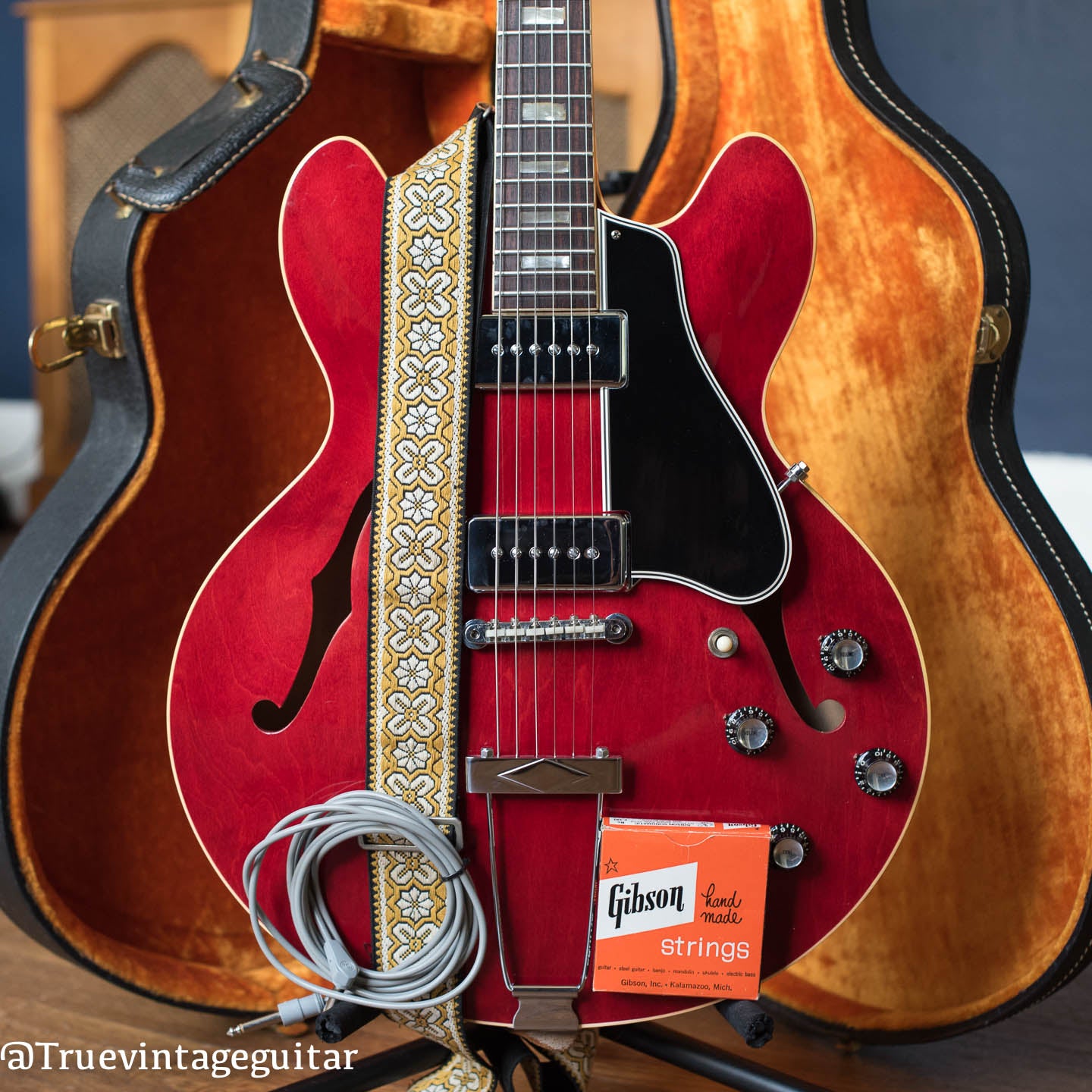 While the ES-330td enjoyed commercial success in the 1960s, the demand for the ES-335 has far exceeded the demand for the ES-330 on the vintage market today. A comparable year and condition ES-330 will command less than half the retail price of an ES-335 for the earlier production years (1959-1964). This makes them an excellent buy for the savvy collector and player looking for that vintage vibe and tone without breaking the bank. We're always looking for clean vintage Gibson ES-330 and ES-335 guitars. Do you have one you'd like to sell? Reach out to me here: Gibson guitar buyer and send a picture of your guitar. I'd love to chat with you about it.
While the ES-330td enjoyed commercial success in the 1960s, the demand for the ES-335 has far exceeded the demand for the ES-330 on the vintage market today. A comparable year and condition ES-330 will command less than half the retail price of an ES-335 for the earlier production years (1959-1964). This makes them an excellent buy for the savvy collector and player looking for that vintage vibe and tone without breaking the bank. We're always looking for clean vintage Gibson ES-330 and ES-335 guitars. Do you have one you'd like to sell? Reach out to me here: Gibson guitar buyer and send a picture of your guitar. I'd love to chat with you about it.
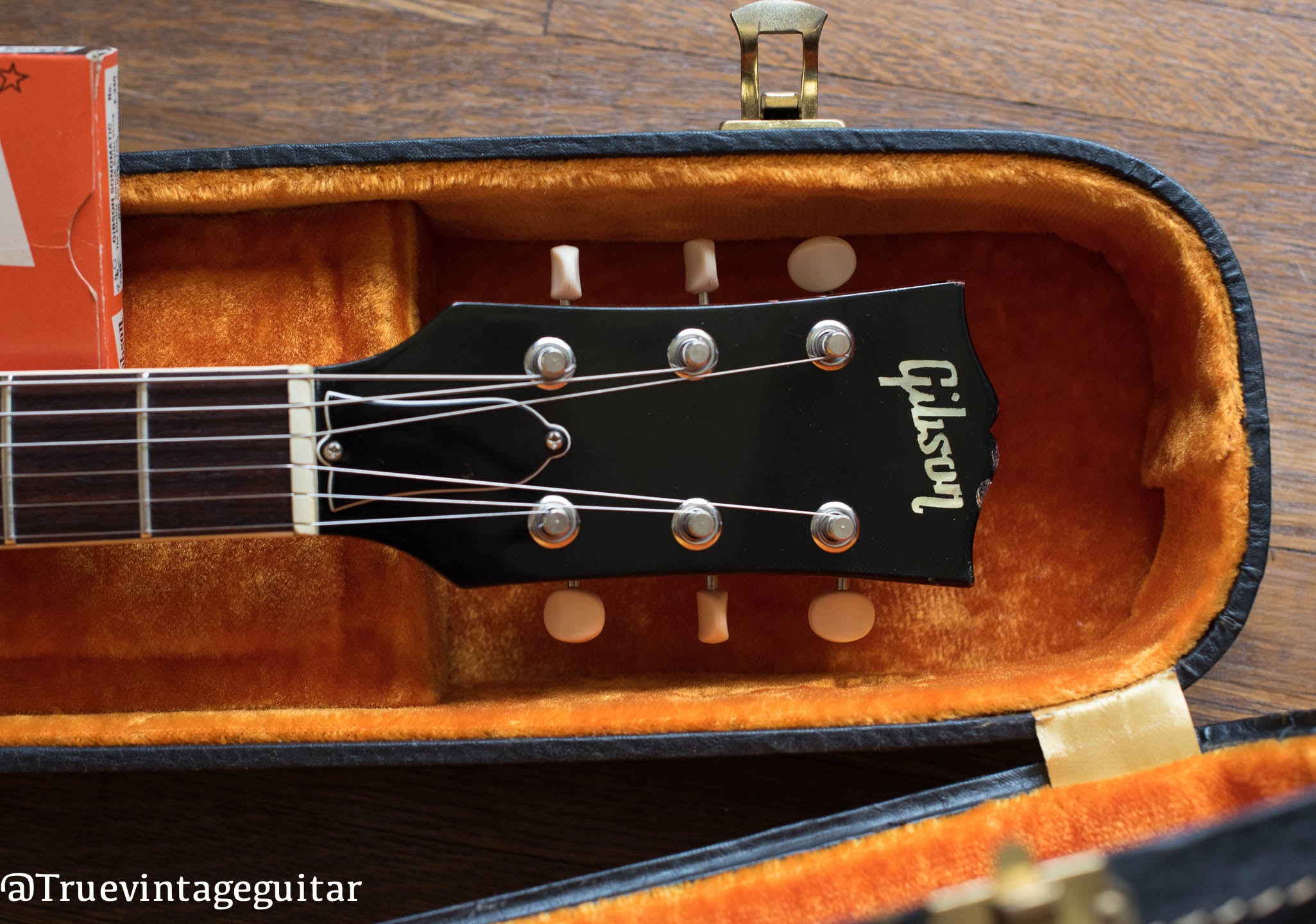
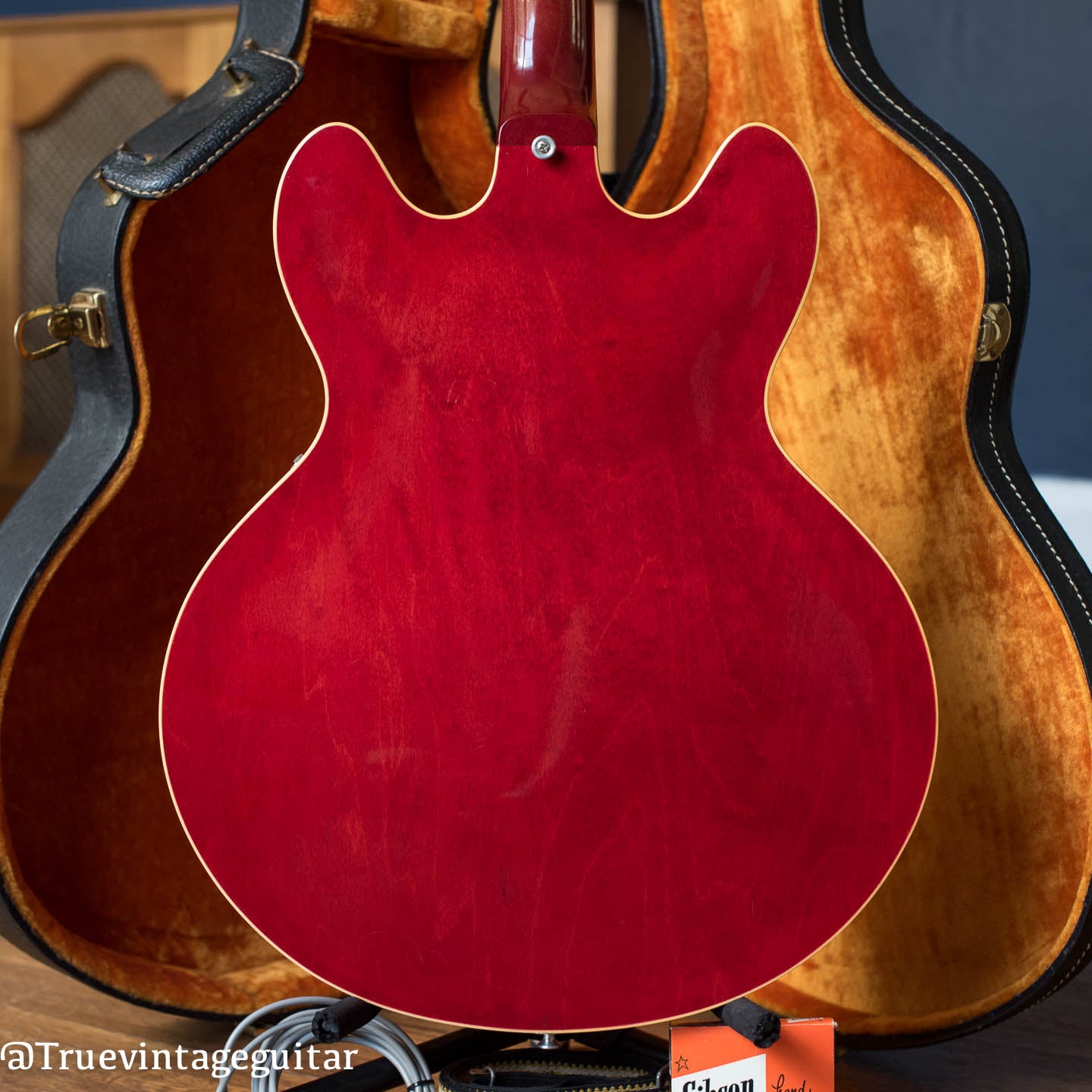


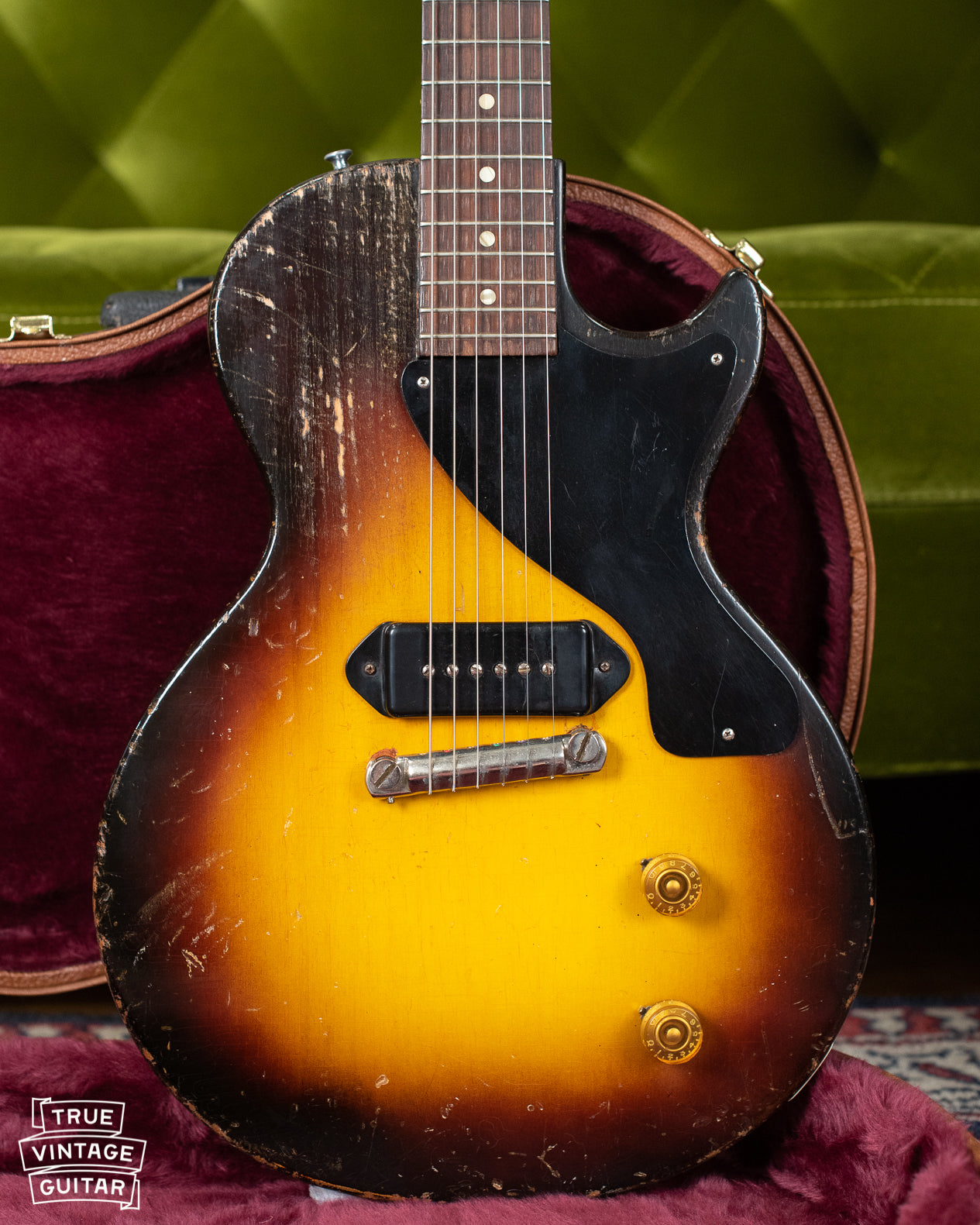
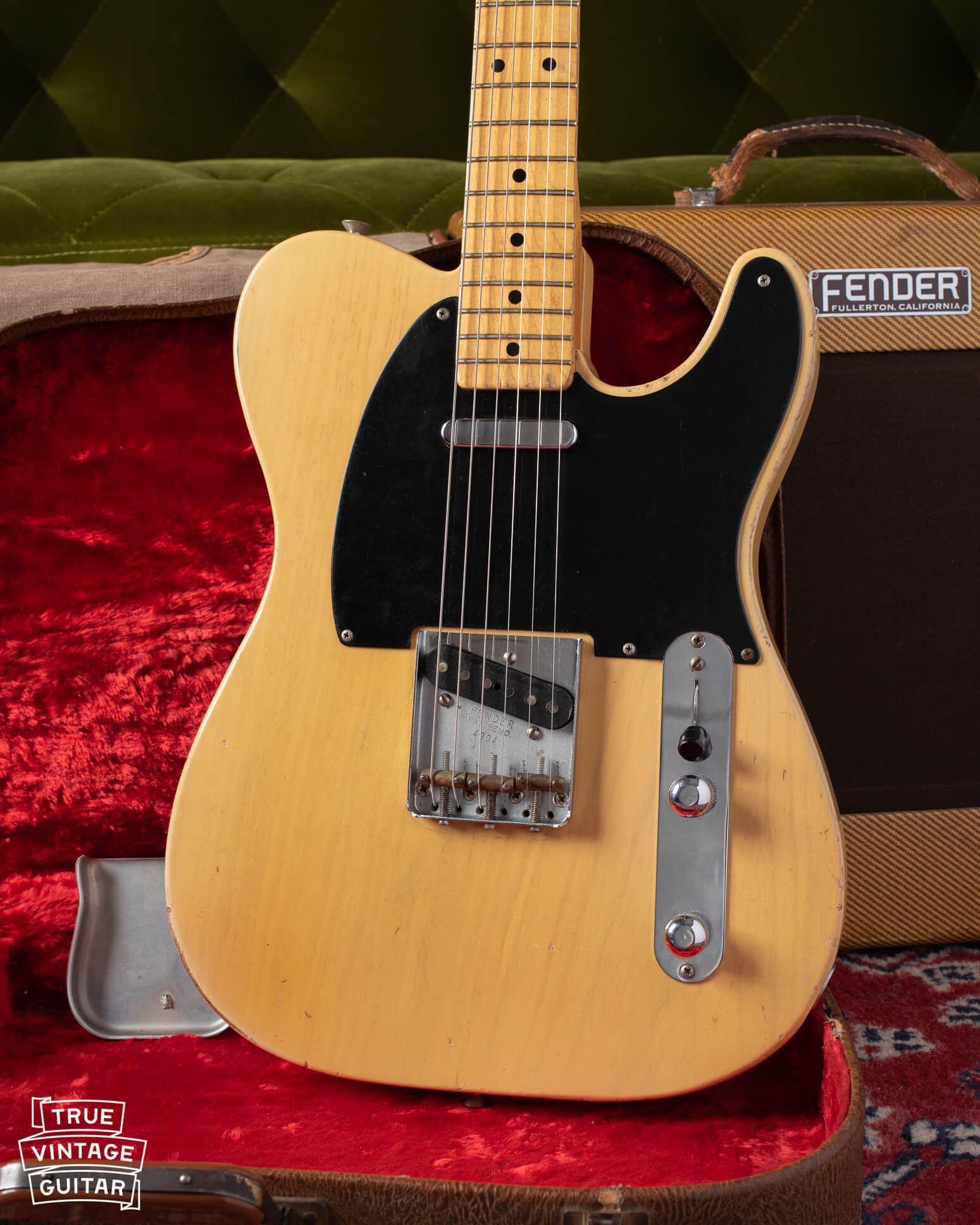
Comments
Great work and love all the information. However, being the recent new owner of a 330T, the guitar I purchased was presented as either a 1959 or 1960. How can I tell the difference and does it matter??
thanx much.
Hello,
Great succinct and informative article. im toying with the idea of getting a 330 but its a 66’, given what you’ve said in your article will the nut be very decreased? assuming it affects string spacing, as that’s what im concerned about.. did all models after 65 have the smaller nut?
Im not too familiar with standard nut measurements but for reference what does a les paul have?
Would really appreciate your advice.
Cheers,
Sam